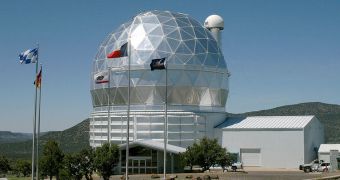Astronomers at the Pennsylvania State University (Penn State) announce the discovery of three extrasolar planets in the Sun's neighborhood. Each of these objects is orbiting a giant, dying star.
Using the Hobby-Eberly Telescope (HET), investigators recently scrutinized the stars HD 240237, BD +48 738, and HD 96127 for possible companions, and were able to determine that each of these objects featured at least one exoplanet in orbit.
The Evan Pugh Professor of Astronomy and Astrophysics at Penn State, Alexander Wolszczan, believes that one of the stars may have yet another companion. However, studies conducted thus far have only provided tantalizing clues as to its existence. A firm confirmation has yet to be made.
Wolszczan is renowned for the fact that he was the first astronomer to detect a planet outside our solar system, nearly 20 years ago. His new work is now helping colleagues gain a deeper understanding of how planetary systems evolve around stars that are in their final death throes.
Experts will publish a study detailing the discoveries in a paper to appear in the upcoming December issue of the Astrophysical Journal. Penn State Department of Astronomy and Astrophysics graduate student Sara Gettel is the first author of the research.
“Each of the three stars is swelling and has already become a red giant – a dying star that soon will gobble up any planet that happens to be orbiting too close to it,” Wolszczan says of the discoveries.
“While we certainly can expect a similar fate for our own Sun, which eventually will become a red giant and possibly will consume our Earth, we won't have to worry about it happening for another 5 billion years,” he goes on to add.
When the Sun itself will bloat up, its diameter will increase so much that it will engulf the orbits of Mercury, Venus and Earth, and potentially even Mars. All these planets will be destroyed, consumed by the dying nuclear fusion reaction inside the Sun.
However, our parent star is currently only halfway through its expected life cycle, which means that humanity has sufficient time to develop a means of changing Earth's orbit before the Sun decides to swallow us whole.
Interestingly, moons such as Saturn's Enceladus and Titan, and Jupiter's Europa, may become our new homes as the surface of the star draws nearer to our planet.
“Europa is an icy wasteland and it is certainly not habitable now, but as the Sun continues to heat up and expand, our Earth will become too hot, while at the same time, Europa will melt and may spend a couple billion years in the Goldilocks zone covered by vast, beautiful oceans,” Wolszczan concludes.

 14 DAY TRIAL //
14 DAY TRIAL //